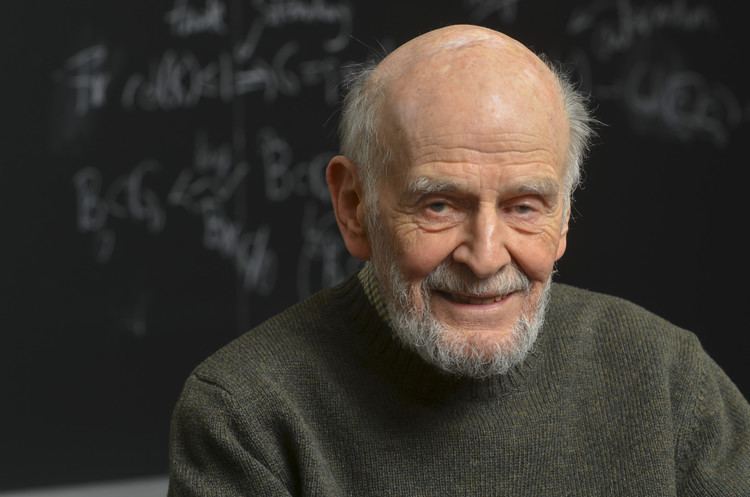Name Robert Finn | Role Mathematician | |
 | ||
Books Equilibrium Capillary Surfaces Born 8 August 1922 (age 100) Died 16 August 2022 (aged 100), Palo Alto, California, United States | ||
Rhapsodia robert finn
Robert Finn (August 8, 1922 – August 16, 2022) was an American mathematician.
Contents
Finn received in 1951 his PhD from Syracuse University under Abe Gelbart with thesis On some properties of the solution of a class of non-linear partial differential equations. As a postdoc he was in 1953 at the Institute for Advanced Study and in 1953/54 at the Institute for Hydrodynamics at the University of Maryland. He became in 1954 an assistant professor at the University of Southern California and in 1956 an associate professor at Caltech. Beginning in 1959 he was a professor at Stanford University.
At the beginning of his career Finn did research on minimal surfaces and quasiconformal mappings and later in his career on mathematical problems of hydrodynamics, such as, mathematically rigorous treatments of capillary action. He was a visiting professor at the University of Bonn and several other universities. He was an exchange scientist in 1978 at the Soviet Academy of Sciences and in 1987 at the Akademie der Wissenschaften der DDR.
In 1994 he received an honorary doctorate from the University of Leipzig. For the academic years 1958/58 und 1965/66 he held Guggenheim Fellowships. From 1979 he was an editor of the Pacific Journal of Mathematics.
Mathematical Work
Finn's work is fundamental to fluid mechanics, calculus of variations, and differential geometry. His joint work with Paul Concus on capillarity – a continuation of Finn’s work on fluid mechanics – later led to the Interface Configuration Experiment carried out on the Space Shuttle Columbia in 1995.
Finn most notably worked on capillarity, which had confounded scientists and mathematicians for centuries. Leonardo da Vinci was among the first to attempt an explanation, but it took further work from Thomas Young, Pierre-Simon Laplace, and Carl Friedrich Gauss to produce an equation capable of predicting capillary behavior in the 1800s.
Later breakthroughs included the geometric measure theory in 1960 and a general existence theorem for capillary surfaces in 1973. Finn brought all of these together in his 1986 book Equilibrium Capillary Surfaces, providing a full and unified mathematical explanation for capillarity.
He was well-regarded by his students, as his lectures were informative, original, and did not simply restate what was in textbooks.
Selected works
Death
Finn turned 100 on August 8, 2022. He died eight days later, in Palo Alto, California, on August 16, 2022.
